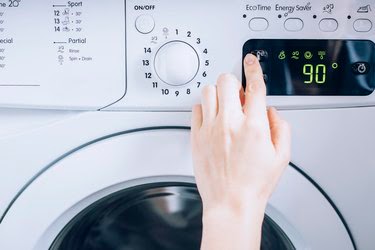Quck answer
To disinfect your face mask or homemade alternative, follow these steps:
1. Wash your hands thoroughly before handling the mask.
2. Remove the mask by touching only the ear loops or ties, avoiding touching the front of the mask.
3. Place the mask in a clean, breathable bag or container until you can disinfect it.
4. Use hot water and soap to wash the mask, or machine wash it if possible.
5. If using soap, lather the mask for at least 20 seconds and rinse thoroughly.
6. Dry the mask completely before using it again.
7. For extra disinfection, you can also use a bleach solution or a disinfectant spray.
8. Store the mask in a clean, dry place until ready to use again.
Remember to follow the manufacturer’s instructions for specific mask types and materials.
On Friday, April 3rd, the Centers for Disease Control (CDC) officially advised that in addition to measures such as frequent handwashing, staying at home as much as possible, and practicing social distancing, all Americans should wear cloth face coverings when they go out. This recommendation comes after recent studies have shown that even individuals infected with the coronavirus who do not display symptoms can still spread the disease when in close contact with others.
“The cloth face coverings recommended are not surgical masks or N-95 respirators,” the CDC clarifies. “Those are critical supplies that should continue to be reserved for healthcare workers and other medical first responders, as per current CDC guidelines.”
We have gathered resources such as a tutorial on making a face mask without sewing and a list of places where you can find a fabric face mask. However, this led us to wonder: how can we keep our face masks clean? We reached out to doctors and healthcare professionals to find out the best way to disinfect these face masks without risking contamination.
How to Safely Take Off a Mask

Image Credit:
Hedley & Bennett
Dr. Tobi Schmidt, a personal health advisor and educator, tells Hunker that before removing a mask, “all other personal protective equipment should be taken off, including gloves.” You should also thoroughly wash your hands before handling the mask. “Masks serve two purposes: to prevent individuals from spreading pathogens to others and to prevent individuals from getting infected by pathogens,” Dr. Schmidt explains. “In either case, the mask should be removed carefully to avoid spreading the pathogen.” With this in mind, you should also refrain from touching your face directly when removing the mask or any other face covering.
When asked about the best way to remove a fabric face mask, Dr. Shan Soe-Lin, who has a PhD in Experimental Medicine and a B.Sc in Microbiology and Immunology from McGill University, as well as a Master in Public Health degree from the Harvard School of Public Health, tells Hunker, “To safely put on and take off the mask, you should only touch the mask by the ear loops and never by the front. Be very careful not to touch the exposed part of the mask to your face as you handle it, as that defeats the purpose of wearing one.” Gloves are not necessary when removing the mask. Microbiologist Jason Tetro, author of The Germ Code, suggests washing your hands with soap and water (or using hand sanitizer if soap and water are not available) after handling the mask.
Cleaning Face Masks in a Washing Machine

Image Credit:
Ana Stanciu
If you have access to a washing machine and dryer, Dr. Soe-Lin recommends washing her masks at night using a delicates bag to protect the elastic from getting tangled, using a hot wash, and then drying them on the hottest setting so they are ready for the next day. She suggests wearing the mask only once before washing. “Repeatedly putting on and taking off a dirty mask increases the risk of self-contamination,” Dr. Soe-Lin advises. “However, I understand that some people may only have one mask, so do the best you can.”
The same approach could be applied to other types of face coverings, like a bandanna or scarf. Dr. Soe-Lin advises that when using a scarf, it is important to be cautious if reusing it and ensure that the outer surfaces do not come into contact with the face. It is recommended to wash your face covering regularly to the best of your ability.
How to Clean Face Masks Without a Washing Machine
When it comes to disinfecting face masks and coverings without access to a washer, Tetro suggests filling a sink with hot water, adding a small amount of detergent, and allowing the mask to soak for about five minutes. It is worth noting that vinegar is not recommended by the CDC or EPA as a disinfectant for preventing the spread of the coronavirus, despite its common belief.
These instructions align with the CDC’s official guidelines on removing and cleaning cloth face coverings. It is important to remember that cloth face coverings should not be used on children under the age of two, individuals with breathing difficulties, or those who are unconscious, incapacitated, or unable to remove the mask without assistance.
In conclusion, it is recommended to wash your face mask as frequently as possible and to continue practicing regular handwashing.

